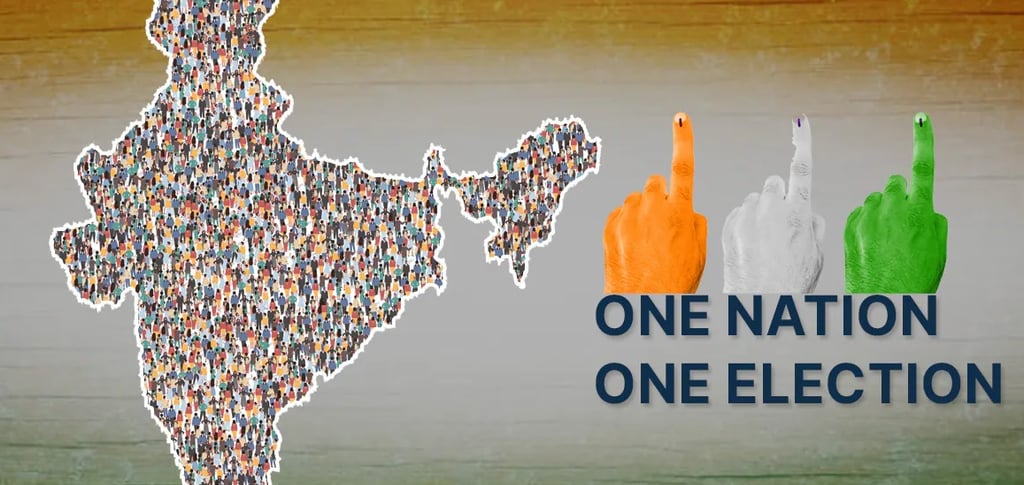One Nation, One Election: A step towards efficient governance
The committee’s recommendations, which include constitutional amendments to Articles 82A and 324A, are a crucial step toward realizing the vision of simultaneous elections.
NATIONAL


The concept of "One Nation, One Election," which advocates for the simultaneous holding of elections for the Lok Sabha and State Legislative Assemblies, has gained significant traction in India. The idea aims to streamline the electoral process, reduce costs, and ensure better governance by aligning the election cycles of the national and state governments. A recent report by the High-Level Committee on Simultaneous Elections, chaired by former President Ram Nath Kovind, has sparked renewed interest in this proposal, which could transform the country's electoral framework.
India’s electoral history has seen a mix of simultaneous and staggered elections. From 1951 to 1967, elections for the Lok Sabha and State Assemblies were held together. However, disruptions such as premature dissolutions and term extensions have led to the current system of staggered elections. The proposal to reinstate simultaneous elections is seen as a potential solution to the challenges of frequent and fragmented election cycles.
The 2024 report outlines a phased approach to synchronizing elections, beginning with the Lok Sabha and State Assemblies, followed by local body elections. With over 21,500 public responses and 47 political parties weighing in, the committee found overwhelming support for the idea, especially from business groups like CII and FICCI, who highlighted its potential to reduce economic disruptions.
The proposed shift to simultaneous elections is seen as beneficial in multiple ways:
Consistency in Governance: Frequent elections often divert the focus of political leaders from governance to campaigning. By aligning election cycles, the government can dedicate more time to developmental activities and policy implementation, reducing the distractions of electioneering.
Prevention of Policy Paralysis: The Model Code of Conduct (MCC) often hampers the functioning of government departments during election periods. Simultaneous elections would limit the duration of the MCC, ensuring smoother governance without the interruptions caused by repeated electoral campaigns.
Resource Optimization: Organizing multiple elections across different states requires significant resources, including manpower and equipment. Simultaneous elections would help in better resource allocation, reducing wastage and improving efficiency.
Financial Savings: Conducting elections simultaneously could lead to substantial cost savings. The government would save on logistics, security, and manpower costs that are incurred when elections are held separately.
Regional Party Relevance: While critics argue that simultaneous elections could marginalize regional parties, the report suggests that the new system would actually preserve their relevance by focusing on local issues. Regional parties would have a more significant role in shaping the electoral discourse.
Despite widespread support, some political parties and experts have raised concerns. They fear that the new system might overshadow regional issues and undermine the democratic diversity that India is known for. However, the committee’s report assures that this will not be the case, as simultaneous elections would create an environment for more inclusive political participation, allowing regional concerns to be highlighted alongside national issues.
The committee’s recommendations, which include constitutional amendments to Articles 82A and 324A, are a crucial step toward realizing the vision of simultaneous elections. The government has already taken steps to implement these changes, with a phased rollout plan that begins with the synchronization of national and state elections.
The concept of "One Nation, One Election" presents an opportunity to enhance India’s democratic processes, making them more efficient, cost-effective, and focused on governance. As the country moves towards electoral reform, the success of this initiative will depend on continued public support and the careful navigation of political concerns. With its potential to reshape the political landscape, this proposal stands as a significant milestone in India’s journey toward modernizing its electoral system.
